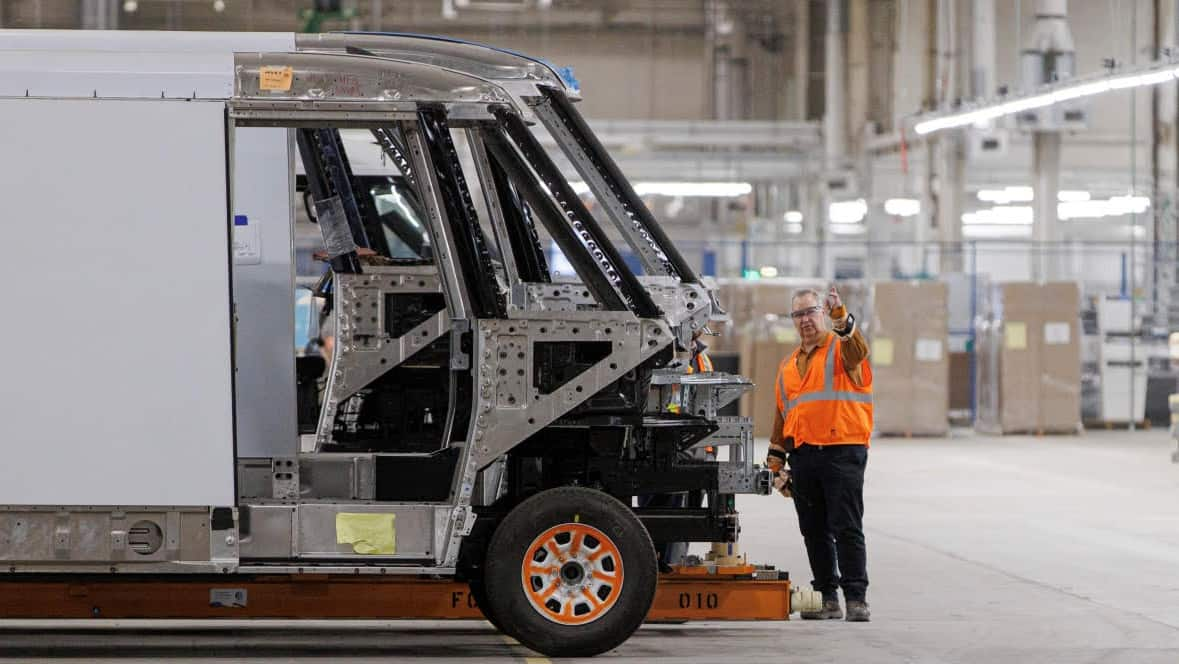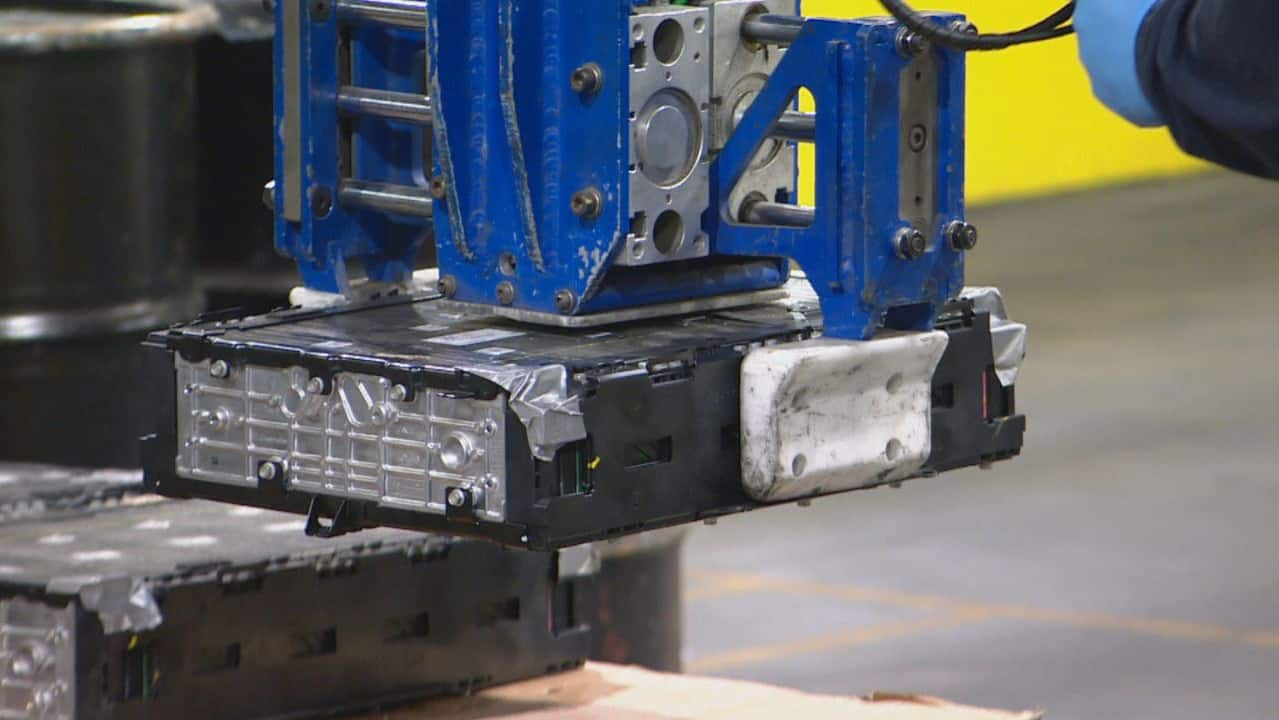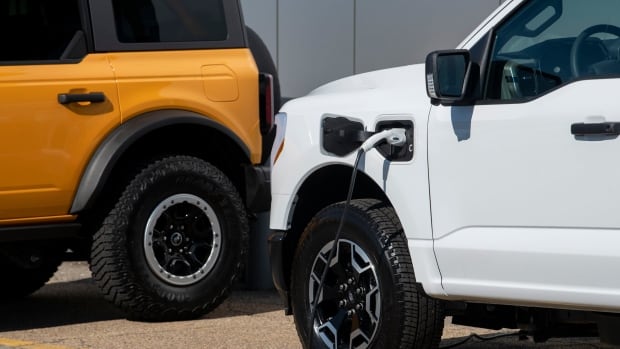
The Sunday Magazine23:18Test driving the promise of EV pickup trucks
Switching from a gas-guzzling pickup truck to an electric model was easy for Steve Vivian, he says, thanks in part to the design.
“It just looks like a pickup truck,” he told The Sunday Magazine’s Peter Mitton.
Vivian’s Ford F-150 Lightning, the all-electric version of the U.S.-automaker’s best-selling vehicle, was among the first in Canada. The Guelph, Ont., HVAC technician and firefighter bought it sight unseen last fall, putting down a deposit and waiting 18 months for delivery.
There are few signs that Vivian’s F-150 is different from its gas-powered kin. Only a closed-off front grill that opens to a frunk — or front trunk — not an engine, and a charging port near the driver’s side door signal its propulsion method.
“I’m not, you know, the biggest environmentally friendly person in the world. But it is nice to know that it will have some impact,” said Vivian.
Pickup trucks have been among the best-selling vehicles in Canada for decades. Last year, four of the top five most-sold vehicles were full-size trucks — the fuel-based Ford F-150 topping the list — according to data collected by Driving.ca. According to Ford, that model has been the No. 1 selling line of pickup trucks in Canada for 57 years.
Proponents say utility is a big reason for the popularity of trucks, while others see them as a status symbol.
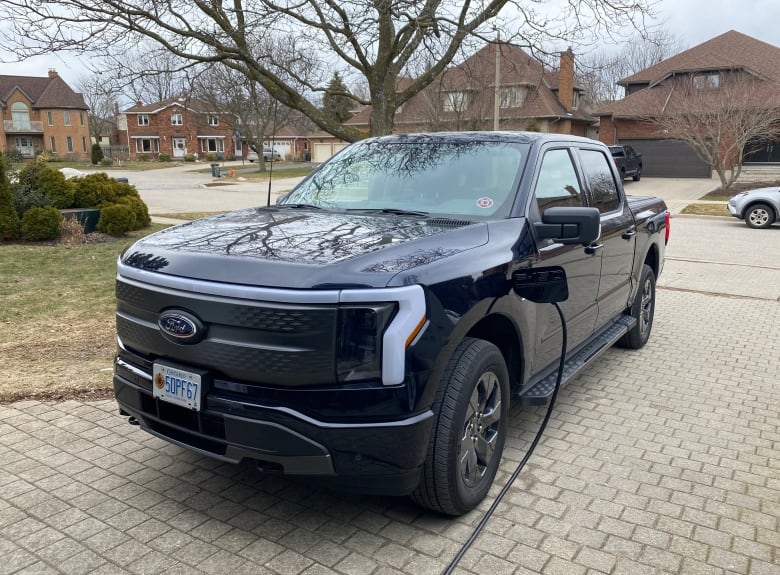
The race to lower carbon emissions has pushed automakers to pivot many of their models from fuel to battery power. Until recently, those electric models have been smaller, sometimes eccentrically styled models. But now, more large, utility-focused models are coming onto the market.
“It’s great in that we are electrifying the fleet, and that is the important thing,” said David Reichmuth, a senior engineer of clean transportation with the non-profit science advocacy group Union of Concerned Scientists. “We really can’t do it too fast to limit the damage from climate change.”
But just as larger gas cars typically have a larger environmental footprint, the same is true for electric vehicles.
“Just because we’re switching from gasoline to an electric vehicle doesn’t mean that that gives us license to go buy a Hummer or the largest, least efficient vehicle that we can find,” said Reichmuth.
EV trucks emit less carbon over lifetime
The popularity of trucks and SUVs in North America is no accident. Manufacturers have been steadily pushing them for decades.
“What are the ads between innings in a baseball game? It’s large SUVs or pickup trucks going off road to the top of a mountain,” said Reichmuth.
“That’s not what people need vehicles for in general. They need them to get to work, to school, to the grocery store, etc.”
WATCH | Electric delivery trucks roll off the line in Ontario:
‘We’re creating a whole supply chain here in Canada so that auto workers here in Ontario will be able to build electric vehicles,’ said Prime Minister Justin Trudeau on Monday after a converted GM plant turned out its first electric delivery vans.
Manufacturers have been steadily shifting toward larger vehicles. On Tuesday, GM announced it would discontinue the Bolt EV and EUV vehicles — smaller hatchback electric cars — later this year as they prioritize EV trucks and SUVs built on a new battery platform.
“People are interested in heavy trucks for a variety of reasons,” said Sandor Piszar, vice president of sales, service and marketing at GM Canada.
Some buyers of the EV trucks are the traditional demographic for trucks — people who need to haul equipment for work or tow a trailer. Now, Piszar says, another market is emerging among those who are interested in a truck or large SUV, but worried about their efficiency.
“And now they have an option of an EV pickup truck,” he said.
Compared to a gasoline-powered car, electric vehicles emit far less carbon during their operation. That doesn’t mean they are entirely emissions free, however, especially when it comes to their manufacturing and battery production.
According to new research from MIT, some new hybrid-electric pickup trucks and SUVs can emit more carbon than gas-powered cars over their lifecycle due, in part, to fuel use and added battery manufacturing.
Still, Reichmuth notes that the lifetime emissions for an all-electric truck would be half of a comparable gas-powered model.
Truck styling has become more aggressive
Dan Albert, an author and automobile historian, says the first pickup dates back to 1917 with Ford’s Model TT.
Pickups got more traction among everyday buyers in the late ’90s, Albert said, when Ford launched a four-door F-150 and allowed families to replace sedans and minivans.
“So suddenly you had the same utility as you had in a regular sedan, which is a five passenger vehicle with the look and utility of a pickup truck with the bed,” the author told The Sunday Magazine.
At the same time, the styling of trucks and SUVs started to become more aggressive — with larger front ends and smaller beds — and their size exploded. Add in batteries, ever-growing in capacity, and their weight is spiking, too.

That’s led to concerns about the safety of trucks. In a 2022 study from the Journal of Safety Research, researchers found that pickups and SUVs account for about a quarter of all collisions with pedestrians and bikes, but nearly half of all the deaths.
For example, the battery of a new GMC Hummer EV alone weighs nearly as much as a Honda Civic, said Jennifer Homendy, chair of the U.S. National Transportation Safety Board, during a presentation at the Transportation Research Board annual meeting in January.
“I support [the government’s] drive toward electric vehicles, but we have to be careful that we aren’t also creating unintended consequences: more death on our roads,” she said.
Petro-masculinity and burning fuel
The size and styling of trucks is part of truck culture — and a part of the culture’s appeal is the burning of fossil fuels, argues Cara Daggett, a Virginia Tech assistant professor of political science.
Daggett refers to petro-masculinity, a term she coined, and writes that a certain American way of life — working- and middle-class jobs largely staffed by men providing for their family — was made possible through the consumption of fossil fuels.
“Petro-masculinity is about understanding how this identity … of what it means to be a man, is connected to energy and connected to using more fossil fuels starting in the 19th century,” she said.
WATCH | How EV batteries get recycled:
In Canada, EVs have now been around long enough that some will need to be replaced in the next few years, prompting some businesses to find ways to recycle all the batteries that power them and turn them into valuable materials.
The auto industry itself has made that connection. A Super Bowl commercial for the Ram 1500 REV presents its electric pickup as a solution to worries about “premature electrification.”
“I think among some climate scientists, there’s this idea that if only people understood the science or really could see or experience climate change, they will realize something has to be done about it,” Daggett said.
“Instead, I think there could be the opposite reaction, that this could be felt as a challenge to a way of life and people would resist it on that basis.”
Questions from fellow truck owners
Vivian, the firefighter, hasn’t gotten much pushback to buying an EV. If anything, he says other truck owners are curious about it.
How long does it take to charge? He gets about 50 kilometres of driving for every hour it’s plugged into a specially installed home charger. Can it tow a boat? Yes, but he notes the range will be shorter.
And even though it’s nearly silent with no engine, Vivian says his EV truck offers plenty of speed.
“The reality is, I think if the price was a little softer than what it is, there would be a lot more people [who] would want to flip over,” he said. Ford’s F-150 Lightning starts at $79,000 and Vivian, who describes himself as “a bit older,” says he paid as much for his truck as he paid for his first house.
Daggett believes the move to electrified transport could see trucks — and their cultural cache — change once again.
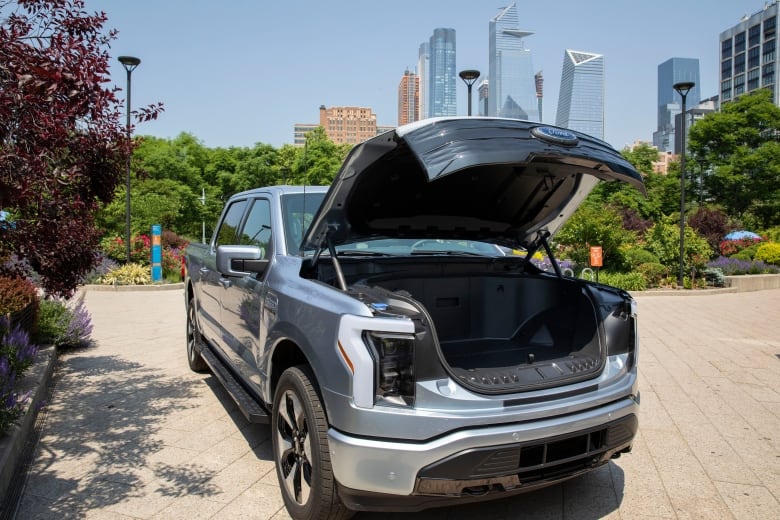
But as the Ram Trucks ad points out, manufacturers still have work to do in alleviating the worries of everyday customers.
EVs need to be presented as something that’s enjoyable and not just a responsible choice that’s good for the environment, says Albert.
“People buy cars and will buy EVs for the same reason people have been buying cars for a century — they’re fun,” he said.
“Transportation is kind of the last concern. The big concern is enjoying the car you have.”
